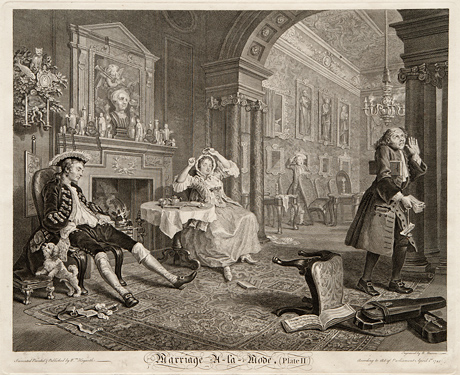Caprice and Corruption: 18th-Century Prints
Friday February 4, 2011 - Thursday March 3, 2011
Bernard Baron (French, 1696 - ca. 1766) after William Hogarth (British, 1697-1764), Marriage agrave; la Mode, 1745, number two from the set of six, etching and engraving. Gift of George W. Davison, 1943.D1.106.2 (photo: R. J. Phil).
Play, fantasy, and corruption were the counterweights to the famed enlightenment of the eighteenth century in Europe. This exhibition started in Venice with the rise of the capriccio or "caprice," exemplified by the enigmatic etchings of Giovanni Battista Tiepolo. In Rome, Giovanni Battista Piranesi created dramatic architectural fantasies in his Carceri, or "Prisons," 1760. Jean Honoré Fragonard and other French artists evoked aristocratic frivolity. Meanwhile, in England, William Hogarth created one of the most memorable tales of corruption, The Harlot's Progress, 1732.
The exhibition concluded with Francisco Goya's radical reworking of the caprice into Los Caprichos, his biting satires of Spanish society. Organized by students in Wesleyan's Museum Studies seminar in fall 2010, the exhibition included more than fifty Old Master prints from the Davison Art Center collection.